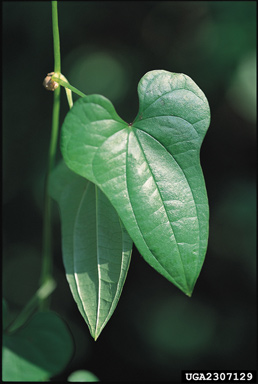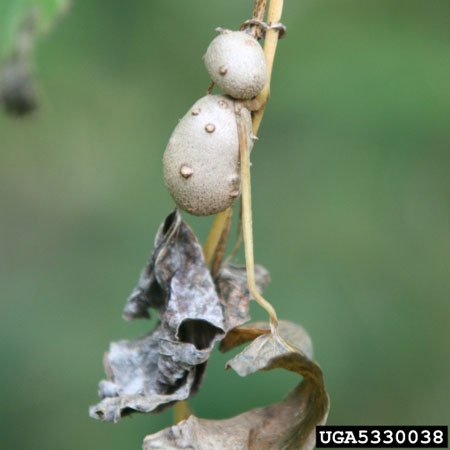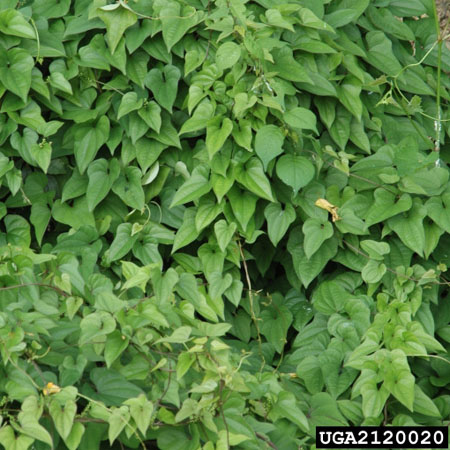Weed Seed - Chinese Yam (Dioscorea polystachya)
Chinese yam is native to eastern Asia, where it is cultivated for its edible roots or tubers and used in traditional Chinese medicine. It is a climbing vine that rapidly invades undisturbed habitats, reduces biodiversity and damages the branches of large trees and shrubs. Manual removal of this plant is possible for small isolated patches; however, multiple herbicide treatments are required for larger infestations.
Where it's found
Established populations of Chinese yam have not been found in Canada. Since its introduction into North America, it has spread throughout the eastern United States. Chinese yam is found in many habitats including forests, ravines, mountain slopes, along rivers and in disturbed areas.
What it looks like
Chinese yam is a climbing vine. Its hairless stems are purplish-red and its leaves are broad and heart-shaped. Its flowers are small, yellowish and have a cinnamon-like fragrance.
How it spreads
Intentional introduction as an ornamental garden plant has been the most significant route of entry to North America. Within North America, Chinese yam reproduces through small above-ground bulbs called bulbils, which are spread by rodents gathering and feeding on them.
Legislation
Chinese yam is regulated as a pest in Canada under the Plant Protection Act. Importation and domestic movement of regulated plants and their propagative parts is prohibited.
What you can do about it
- Avoid planting invasive plants in your garden.
- Use clean, high-quality seed that is certified if possible.
- Declare all plants and related products when returning to Canada.
- Contact your local Canadian Food Inspection Agency (CFIA) office if you suspect you have found this invasive plant. The CFIA will follow up and determine if further action is needed.
Learn more about invasive species.

Attribution: James H. Miller, United States Department of Agriculture—Forest Service (Bugwood.org)

Attribution: Chris Evans, River to River Cooperative Weed Management Area (CWMA) (Bugwood.org)

Attribution: Chris Evans, River to River CWMA (Bugwood.org)